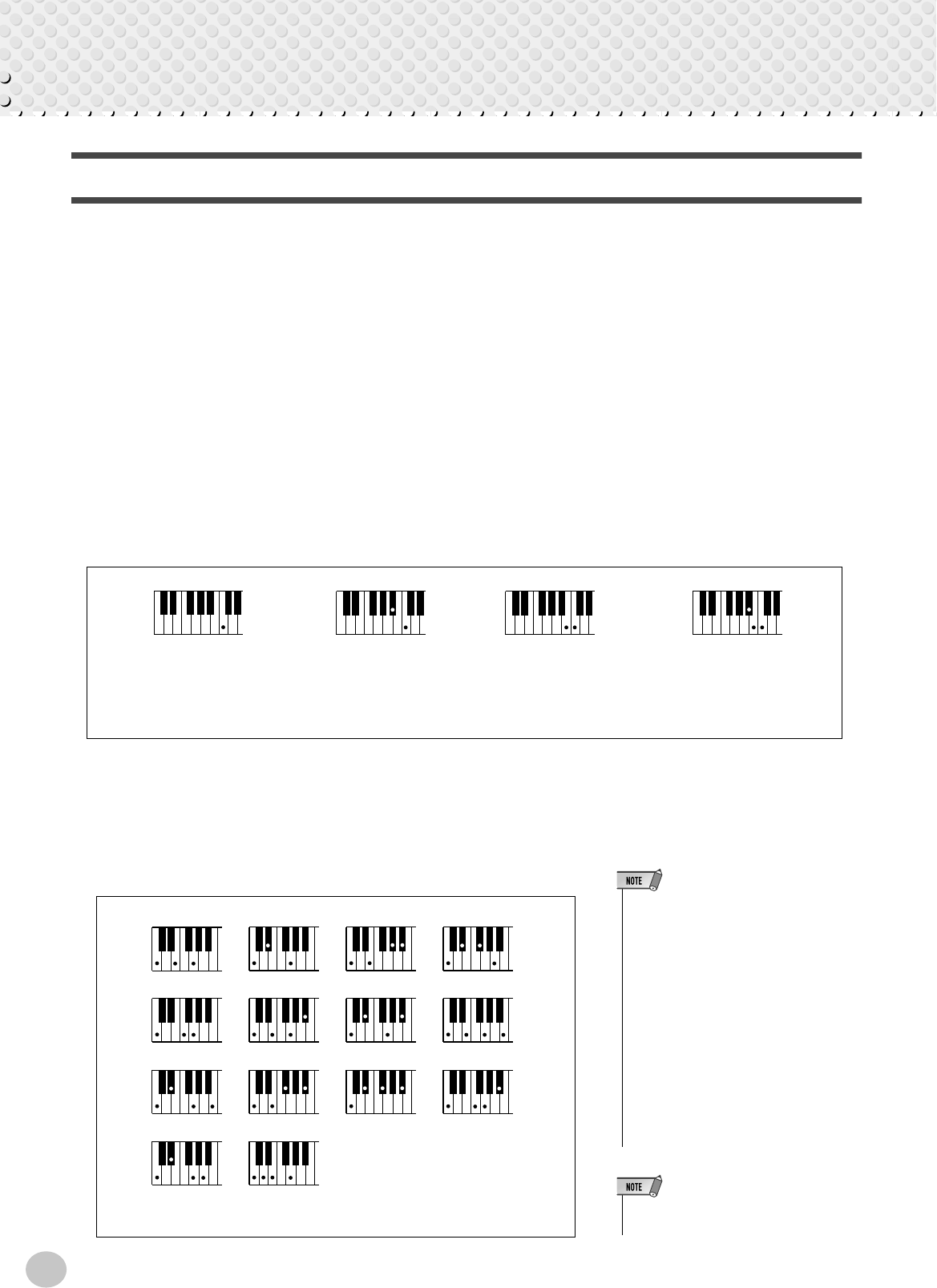
Selecting and Playing Styles
48
Using Auto Accompaniment — Multi Fingering
The auto accompaniment function automatically generates bass and chord accom-
paniment for you to play along with, by using Multi Fingering operation. You can
change the chords of the accompaniment by playing keys in the ACMP section of
the keyboard using either the “Single Finger” or “Fingered” method. With Single
Finger you can simply play a one-, two- or three-finger chord indication (see Sin-
gle Finger Chords below). The Fingered technique is that of conventionally play-
ing all the notes of the chord. Whichever method you use, the PSR-262
“understands” what chord you indicate and then automatically generates the
accompaniment.
■
Single Finger Chords • • • • • • • • • • • • • • • • • • • • • • • • • • • • • •
Chords that can be produced in Single Finger operation are major, minor, seventh
and minor seventh. The illustration below shows how to produce the four chord
types. (The key of C is used here as an example; other keys follow the same rules.
For example, B
b
7 is played as B
b
and A.)
■
Fingered Chords • • • • • • • • • • • • • • • • • • • • • • • • • • • • • • • • •
Using the key of C as an example, the chart below shows the types of chords that
can be recognized in the Fingered mode.
Fingered Chords in the Key of C
C
Cm C
7
Cm
7
To play a major chord:
Press the root note of
the chord.
To play a minor chord:
Press the root note
together with the nearest
black key to the left of it.
To play a seventh chord:
Press the root note
together with the nearest
white key to the left of it.
To play a minor seventh
chord: Press the root note
together with the nearest
white and black keys to
the left of it (three keys
altogether).
C
Cm
7
C
( )
CM
( )
7
Cm
6
Cm
7
( )
CmM
7
( )
C sus
4
7
C
(9)
Csus
4
Cm
b5
7
Caug
(7aug)
( )
Cdim
(dim7)
( )
C
b5
7
* Notes enclosed in parentheses are optional; the chords will be
recognized without them.
If the chord is inverted (i.e., C-E-G is played
as G-C-E), the PSR-262 will still recognize it
as a C chord. The chord recognition system
also has the following rules and exceptions:
• Minor 6th chords are recognized only in
root position, however; all other inversions
are interpreted as minor 7th/flatted 5th.
• If augmented and diminished 7th chords
are inverted, the lowest note will be recog-
nized as the root.
• 7th flatted 5th chords may be played with
the lowest note as the root or the flatted
7th.
• Augmented 7th and diminished 7th chords
are interpreted as simple augmented and
diminished.
• The following chords are not recognized :
B minor 6, B
b
minor 6, and B augmented.


















